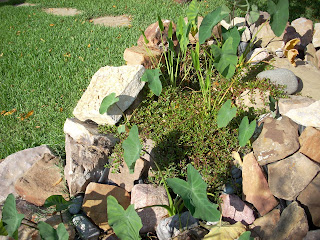
The Queen of Vegetables
Michael Pollan, in his book In Defense of Food, comments that about half of all the broccoli that goes to the market in the United States is the Marathon variety. Agribusiness finds it necessary to go with the highest yielding, most disease-resistant varieties, which most assuredly means a hybrid crop. How sad that most Americans do not know broccoli as anything other than the big, bright, uniform calabrese types they see for sale in the produce section at the supermarket.
I'm pretty sure that I've never eaten fresh broccoli from a garden. Not from a friend's garden, not from a farmer's market. I hope I have some pleasant surprises in store.
In my square foot garden, I have transplanted a Green Comet variety of broccoli and a sprouting variety -- one plant per square. With the weird weather we've been having in Texas, my first attempt just might prove fruitful. Today it's about 55 degrees F, with high humidity as a cold front has pushed its way from the north, and it's been cool, misty and humid for a number of days in late September/early October. Time will tell, but this seems to be perfect for broccoli's needs. I've had a difficult time doing the hardening off, since we have seen very little of the sun in the past couple of weeks. Finally I decided to go experimental, and just put some of the plants in the ground and see how it goes.
I also have a plant of the Di Cicco (Italian heirloom) variety waiting to put in the ground. In fact, I sprouted three different varieties under lights indoors starting in August. Crossing my fingers....
My article about nutrition is found here:
On the Path to Better Nutrition
Image of a broccoli plant from
Howard F. Schwartz, Colorado State University









